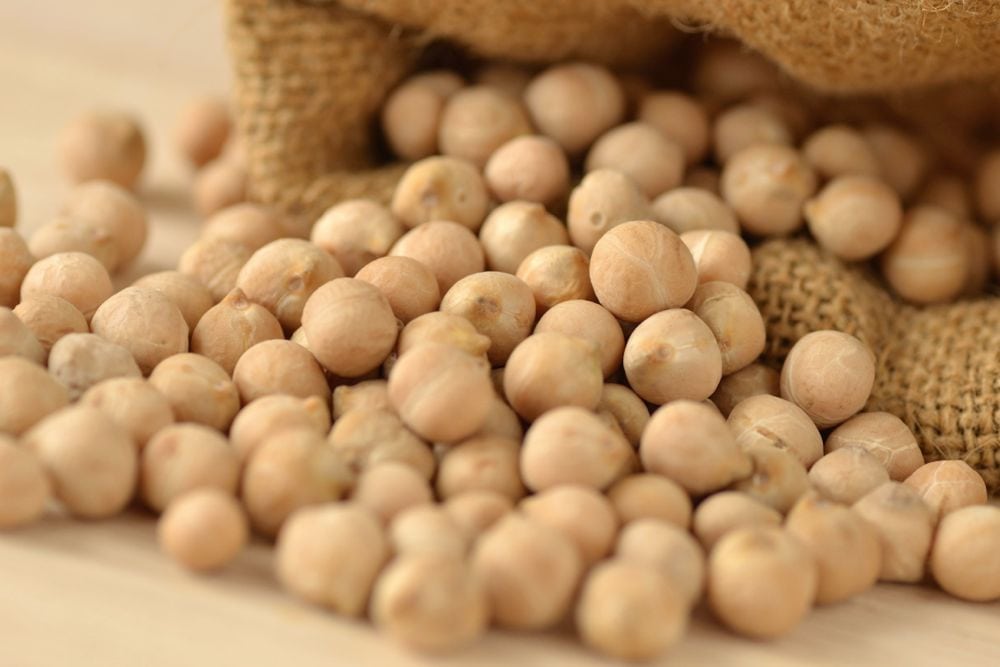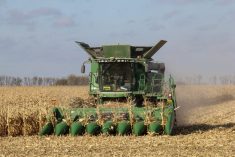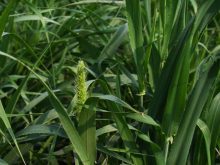After a year of negotiations to develop an insurance-based producer payment protection plan, the Canadian Grain Commission has called it quits, surprising and disappointing some farm groups.
The CGC has been attempting to replace the current bonding system to protect farmers against payment defaults for grain delivered to merchandisers. It had been negotiating with with Atradius Credit Insurance N.V. to develop an insurance-based option.
CGC chief commissioner Elwin Hermanson said insurance industry rules made it difficult to accommodate the grain industry requirements.
“When we got quite a ways down the road we began to see we may not be able to marry some of our requirements and their requirements and by June it became obvious that we were going to be too far apart,” he said in an interview July 31.
Read Also

Pulse Weekly: Steady prices, high production for chickpeas
Western Canadian chickpeas saw stable prices and its largest crop in two decades.
The CGC will look at other options while the current bonding scheme to cover the money farmers are owed when delivering crops to a licensed grain company remains in place.
“We still have security on behalf of producers from all our licensees and we’re pretty diligent in maintaining that program so we’re not scrambling or anything like that,” Hermanson said. “We’re going to take a step back and try to determine which way we go from here.”
Lower cost
The CGC said that although its insurance plan would shorten the protection period after a farmer delivered and include a five per cent deductible on claims, it promised a lower cost to farmers, grain companies and the CGC. The thinking was aggregating the risk of defaults over all the Prairie grain purchased by licensed grain companies would keep costs down, Hermanson said.
Keystone Agricultural Producers (KAP) and Western Canadian Wheat Growers Association (WCWGA) supported the plan and the heads of both organizations said they are disappointed itvwasn’t developed.
“When you look at the volume of grain and the very few incidents (of defaults) that we have you’d think it would be a real windfall for the insurance industry,” KAP president Doug Chorney said in an interview.
“While we respect the commission’s decision, we had hoped an insurance-based system would have provided farmers with better coverage at a reduced cost,” WCWGA president Levi Wood said.
Both Chorney and Wood noted private companies already sell insurance to cover payment defaults, but Hermanson said each sale is a separate transaction. The CGC wants comprehensive coverage for all western Canadian grain companies and all the grain they buy.
Cost was not the issue, Hermanson said. Both parties signed confidentiality agreements preventing them from disclosing what the barriers were, he added.
Back to the drawing board
While Hermanson didn’t rule out the possibility of developing an insurance-based program, he said “it’s unlikely we’d try to follow the same proposal.”
In the meantime it’s back to the drawing board. Other options will be explored, including the farmer-funded contingency fund in Ontario.
“And if there is nothing else we may have to stay with the status quo, but we certainly are open to new options,” Hermanson said.
Before pursuing another option the CGC needs the federal government’s approval and will consult with the industry, he added.
The process of revamping producer payment protection began in December 2007, not long after Gerry Ritz was appointed Minister of Agriculture and Agri-Food Canada. Ritz introduced amendments to the Canada Grain Act, which included scrapping producer protection. Ritz argued the current program was ineffective, costly to farmers and a barrier to new grain companies.
The legislation died, farmers fought back and the government moved to reform the program instead of axing it.
Current program sufficient?
Questions have been raised about how flawed and costly the existing program is.
Between 2002 and 2008 farmers received 77 per cent of their money through the CGC program after a buyer failed to pay them. Out of nine cases farmers were 100 per cent compensated in six and in one they received 99.8 per cent.
In two cases farmers were not fully covered receiving just 28 and 51 cents on the dollar.
In a 2009 report Scott Wolfe Management put the cost of CGC security at $9 million — $1.4 million for CGC administration, $1 million for grain buyer administration and $6.6 million for companies to post security. The report said based on 40 million tonnes of grain being covered annually, the average cost was 23 cents a tonne.
While that may be a reasonable cost, one criticism is that it’s hidden because farmers pay it indirectly to offset thegrain company costs (19 cents a tonne) through lower prices.
Allan Dawson is a reporter for the Manitoba Co-operator















